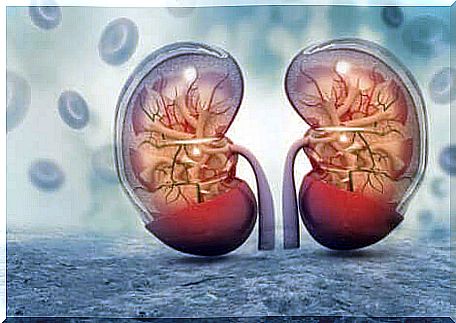Blood Clots From COVID-19
Blood clots from COVID-19 are a new complication that has been noted in patients affected by the coronavirus. The direct consequence is the increase in the number of heart attacks and strokes.

The appearance of blood clots due to COVID-19 is an alarming situation that began to be postponed until the end of March. Several health centers and doctors have published reports of patients with exaggerated clotting during their infection with the coronavirus.
This, as we will see, has been associated with the increase in stroke cases in young people, as has been reported in the United States. The situation has led to a review of detection and treatment protocols.
It is for this reason that some infected and hospitalized patients have been treated with anticoagulants. Research published in the Journal of the American College of Cardiology has brought hope in the face of this complication.
According to the authors of this survey, which was carried out with 2733 patients, those who received anticoagulants had a higher survival rate than those who had not. There is some evidence that blood clots from COVID-19 are manageable if addressed early.
COVID-19 blood clots in the lungs
The organ par excellence affected by the coronavirus is the lung tissue. This is the gateway to SARS-CoV-2 and most of the symptoms derive from the alveolar infection.
A series of cases has already been published, with studies of clinical records of patients and the presence of pulmonary embolism was significant. It is calculated that about 20% of those infected suffer from it.
The problem with pulmonary embolism is that a situation of hypoxia is added to that already caused by pneumonia due to the coronavirus. Blood clots from COVID-19 interfere with the delivery of oxygen to tissues, thereby accelerating complications.
Not all coronavirus patients develop excessive clotting. And not all pulmonary cases lead to pulmonary embolism. This is why the assessment made by the medical teams at the start of the clinical setting is important. It makes it possible to apply an effective anticoagulation protocol.

The lungs aren’t the only place affected by blood clots from COVID-19
Even though the lung tissue is most affected by SARS-CoV-2, there is also a tropism of the virus in the kidneys, for example. Coagulation, even when starting in a lung, is able to travel to the heart and brain through the blood stream.
The COVID-19 blood clot situation includes concern about transforming the respiratory event into a systemic setting. In other words, we go from a localized disease to a disease disseminated throughout the body.
The heart and the brain
A letter published in The New England Journal of Medicine informed patients infected with the coronavirus that they were suffering from coagulopathies. Antiphospholipid antibodies had been detected in them.
The presence of these antibodies is extremely dangerous. They can cause clots to form in almost any place if this coagulopathy is present. This fact is similar to the infarctions found in patients positive for COVID-19.
Likewise, the appearance of strokes in young individuals, under 40, has alerted doctors in the United States. The only explanation found was the uncontrollable clotting that was clogging the arteries in the brain.
Kidneys
The tropism of SARS-CoV-2 through the kidneys has been proven by almost all nephrologists. In the same way that it affects lung cells through the ACE2 receptor, it reaches kidney cells because of the presence of this same protein.
This explains the existence of a high rate of renal failure in people infected with the coronavirus. Indirectly, this also explains the greater sensitivity of patients suffering from hypertension to COVID-19. This is because their kidneys stop properly regulating blood pressure numbers.
Blood clots from COVID-19 lead to another treatment problem for kidney failure. Many of these patients need dialysis to survive and the machine can get blocked.
Dialysis involves passing the patient’s blood through an outer membrane in order to filter it. It thus replaces the work that the renal system would have to perform. When there is excessive clotting, these membranes get blocked repeatedly and need to be cleaned, delaying the process.

Blood clots due to COVID-19 but of unknown cause
Blood clots from COVID-19 have been detected and are an additional complication of the disease, but we are not sure how they form. We can say that this is a consequence of the coronavirus but the direct cause is not very clear.
It could be a coagulation disseminated by human antibodies. Or the same virus has the ability to increase the platelet aggregation of human blood. We also find the theory of cytokine shock in severe cases.
Either way, the evidence accumulated in the publications is causing changes in the protocols of action of health teams. Anticoagulants are now part of the treatments.









